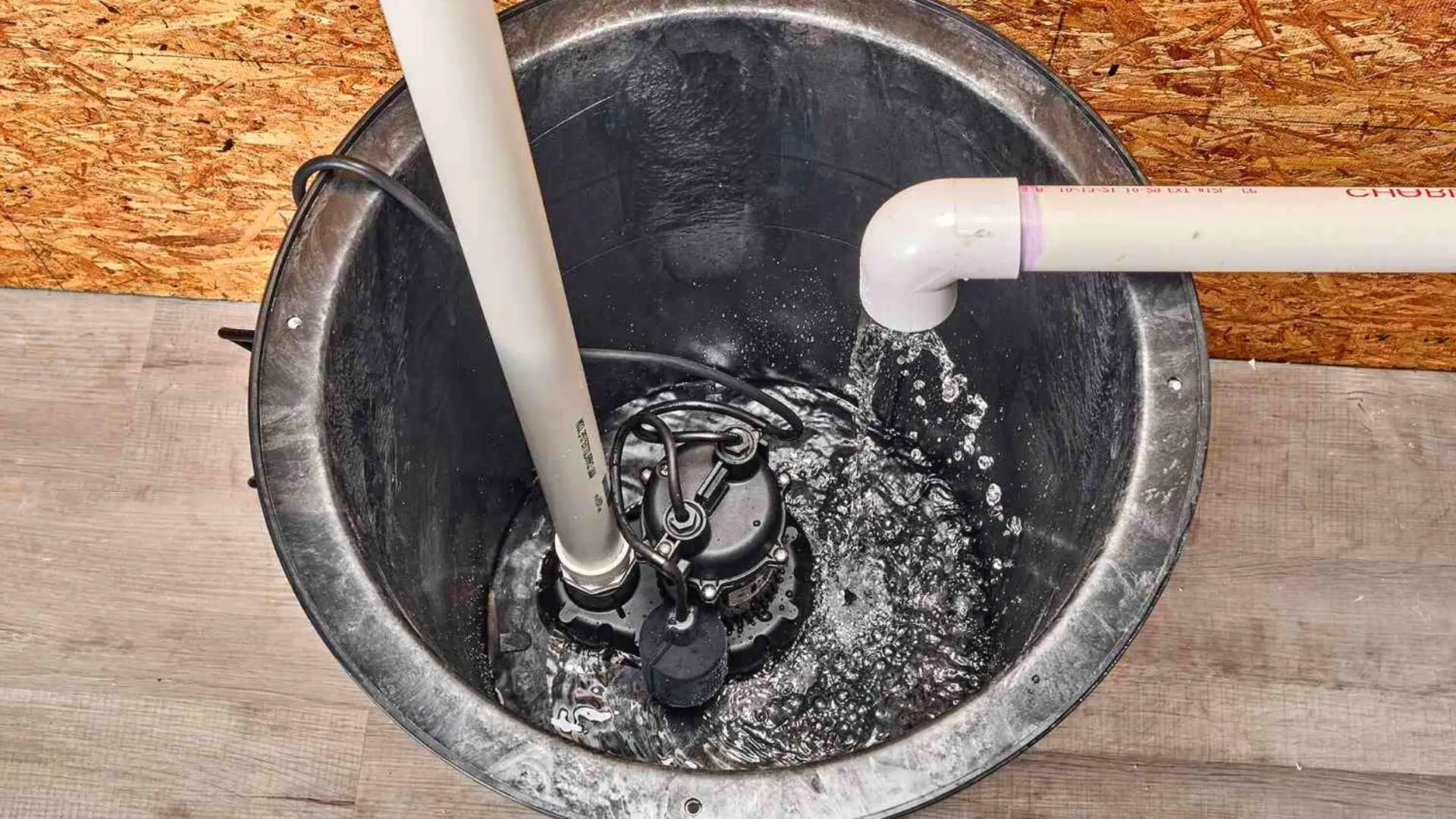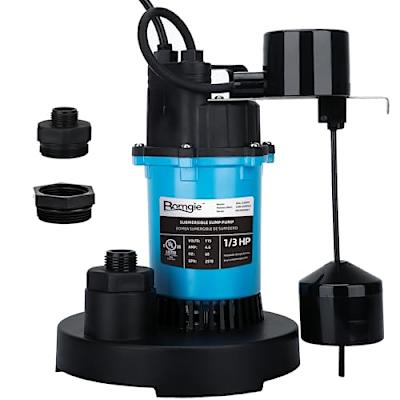Simple Methods for Maintaining a Sump Pump
Simple Methods for Maintaining a Sump Pump
Blog Article
Right here underneath you can locate lots of good news in regards to How To Effectively Clean A Sump Pump.

Sump pumps are important parts in numerous homes, especially in locations susceptible to flooding or extreme wetness. They help stop water damage by successfully getting rid of excess water from basements or crawl spaces. Nevertheless, like any other device, sump pumps require regular maintenance to guarantee they function effectively when required one of the most. Cleaning your sump pump is a crucial part of its upkeep, and recognizing exactly how to do it correctly can conserve you from expensive repairs and possible disasters.
Introduction
Maintaining a clean sump pump is essential for its appropriate performance and longevity. Neglecting this vital task can bring about blockages, breakdowns, and eventually, water damage to your residential or commercial property. For that reason, finding out how to clean up a sump pump is crucial for homeowners that rely on these devices to keep their cellars dry and secured.
Understanding the Sump Pump
Prior to diving right into the cleaning procedure, it's necessary to have a basic understanding of exactly how a sump pump works. Generally installed in a pit or container listed below the basement flooring, a sump pump contains several crucial parts, including a pump, a float button, and a discharge pipeline. When water collects in the pit, the float button activates the pump, which then pumps the water out through the discharge pipe, away from the building's foundation.
Signs of a Dirty Sump Pump
Understanding when your sump pump needs cleansing is vital for preventing potential malfunctions. Some usual indicators that show a dirty sump pump consist of strange noises throughout procedure, lowered water flow, and visible particles in the pit. If you discover any of these symptoms, it's necessary to clean your sump pump promptly to stay clear of any additional concerns.
Preparing for Cleansing
Before you start cleaning your sump pump, it's important to take some safety preventative measures. Start by turning off the power to the pump to avoid any type of electric accidents. Additionally, wear ideal safety equipment, such as handwear covers and safety glasses, to secure on your own from dust, particles, and possible virus.
Step-by-step Overview to Cleansing a Sump Pump
Shutting down the Power
Begin by disconnecting the power supply to the sump pump to prevent any accidents while cleansing.
Getting Rid Of Particles and Dust
Utilize a container or a scoop to remove any type of visible debris, dirt, or sediment from the sump pit. Dispose of the particles effectively to stop it from clogging the pump or the discharge pipe.
Cleaning up the Pump and Float Switch
Once the pit is clear of particles, thoroughly get rid of the pump from the pit. Evaluate the pump and the float switch for any indicators of damages or wear. Utilize a soft brush or fabric to cleanse the surface areas and eliminate any kind of built up grime.
Purging the System
After cleaning up the pump and float switch, purge the sump pit with tidy water to get rid of any kind of remaining dust or sediment. This will certainly assist make certain that the pump operates efficiently and successfully.
Looking For Appropriate Functioning
Before reinstalling the pump, carry out a fast test to ensure that the float button triggers the pump appropriately. Pour some water right into the sump pit and observe the pump's procedure. If whatever is operating correctly, you can rebuild the pump and reconnect the power supply.
Maintenance Tips to Keep Your Sump Pump Clean
Along with regular cleansing, there are a number of maintenance pointers you can follow to maintain your sump pump in optimum condition:
Conclusion
Cleaning your sump pump is an essential facet of its upkeep and guarantees that it operates properly when you require it one of the most. By adhering to the steps laid out in this guide and including normal maintenance right into your regimen, you can prolong the lifespan of your sump pump and shield your home from water damages.
6 STEPS ON HOW TO CLEAN A SUMP PUMP PROPERLY
UNDERSTANDING SUMP PUMPS
Your sump pump plays a crucial role in protecting your home by managing and removing excess water. It primarily functions as a “shield”, guarding your basement against the damaging effects of water accumulation. The pump is housed in a sump pit in the lowest part of your basement, and its job is to pump out any water that collects there.
During heavy rainfalls or when snow melts rapidly, water can infiltrate your basement, posing potential risks like flooding, structural damage, and harmful mold growth. Here, the sump pump springs into action, pumping out the intruding water and directing it away from your home.
SAFETY FIRST
Before cleaning, remember to prioritize safety. Disconnect the sump pump from the power source to prevent any accidental electric shocks. Also, wear sturdy gloves to protect your hands from any sharp or dirty components within the pump.
REMOVE THE SUMP PUMP
After ensuring your safety, the next step is to remove the sump pump from its pit. Doing this might require careful maneuvering as you don’t want to damage any pump components. Once removed, clean the sump pit to remove any accumulated debris or sludge.
INSPECT THE PUMP
Inspect the pump for any visible signs of wear or damage. Check the power cord, float switch, and impeller housing. If any components look worn out or damaged, consider replacing them to ensure optimal performance.
CLEAN THE PUMP
Thoroughly clean the pump with warm, soapy water. Make sure to rid it of any dirt, gravel, or other debris that might impede its performance. You can use a toothbrush to clean the small, hard-to-reach parts of the pump.
REINSTALL THE SUMP PUMP
Reinstall the pump into the sump pit Make sure it’s positioned correctly to remove the water effectively Once it’s back in place, reconnect it to the power source TEST THE PUMP
Finally, pour some water into the pit to ensure the pump works correctly. It should start automatically and begin pumping out the water; if it doesn’t, check the power source and the positioning of the pump.
Remember, while cleaning your sump pump is an essential part of home maintenance, hiring a professional plumber for a thorough inspection and cleaning at least once a year is also important. This will ensure that your pump is in optimal condition, ready to protect your home from potential water damage.
BEST PRACTICES FOR CLEANING SUMP PUMP DISCHARGE PIPES
Regular Inspection: Regularly inspect your discharge pipes, especially during heavy rainfall or snowmelt periods. Look for any signs of blockage or damage. Early detection of problems can prevent serious issues down the line. Periodic Cleaning: Over time, sediment and debris can accumulate in the discharge pipes, impeding the flow of water. Regular cleaning helps keep the pipes clear and functioning efficiently. You can use a high-pressure water jet to effectively clean the pipes. Insulation During Winter: In colder climates, discharge pipes can freeze, blocking the outflow of water. Protect your discharge pipes from freezing temperatures by insulating them with foam pipe insulation. This will ensure the sump pump can continue to discharge water even in freezing conditions. Proper Positioning: The discharge pipe should be positioned to direct water away from your home’s foundation. Improper positioning can lead to water seeping back into the basement. Ensure the pipe is long enough and angled correctly. Installation of a Check Valve: A check valve prevents water from flowing back into your sump pit after the pump has pushed it out. Installing a check valve helps maintain the efficiency of your sump pump and reduces the risk of flooding. Minimize Pipe Turns: Every curve or turn in the discharge pipe can decrease the efficiency of water flow. By minimizing turns and bends in your discharge pipe, you can increase the efficiency of your sump pump. https://www.fullspeedplumbing.com/how-to-clean-a-sump-pump-properly9999/

I was made aware of that write-up on Cleaning & Maintenance Tips for Your Home's Sump Pump through a friend on another website. Sharing is nice. Helping others is fun. Thanks for taking the time to read it.
Schedule Appointment Now Report this page